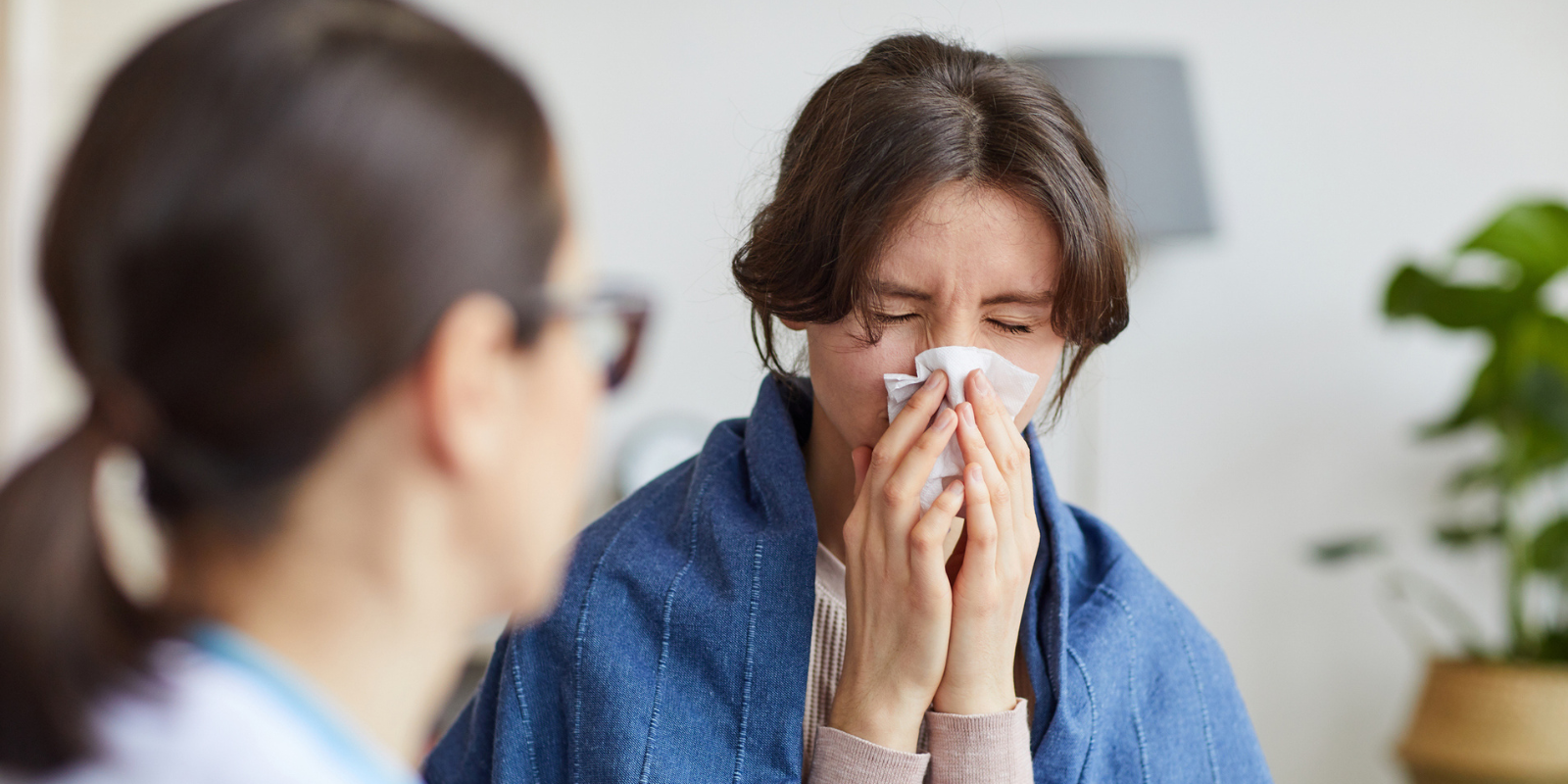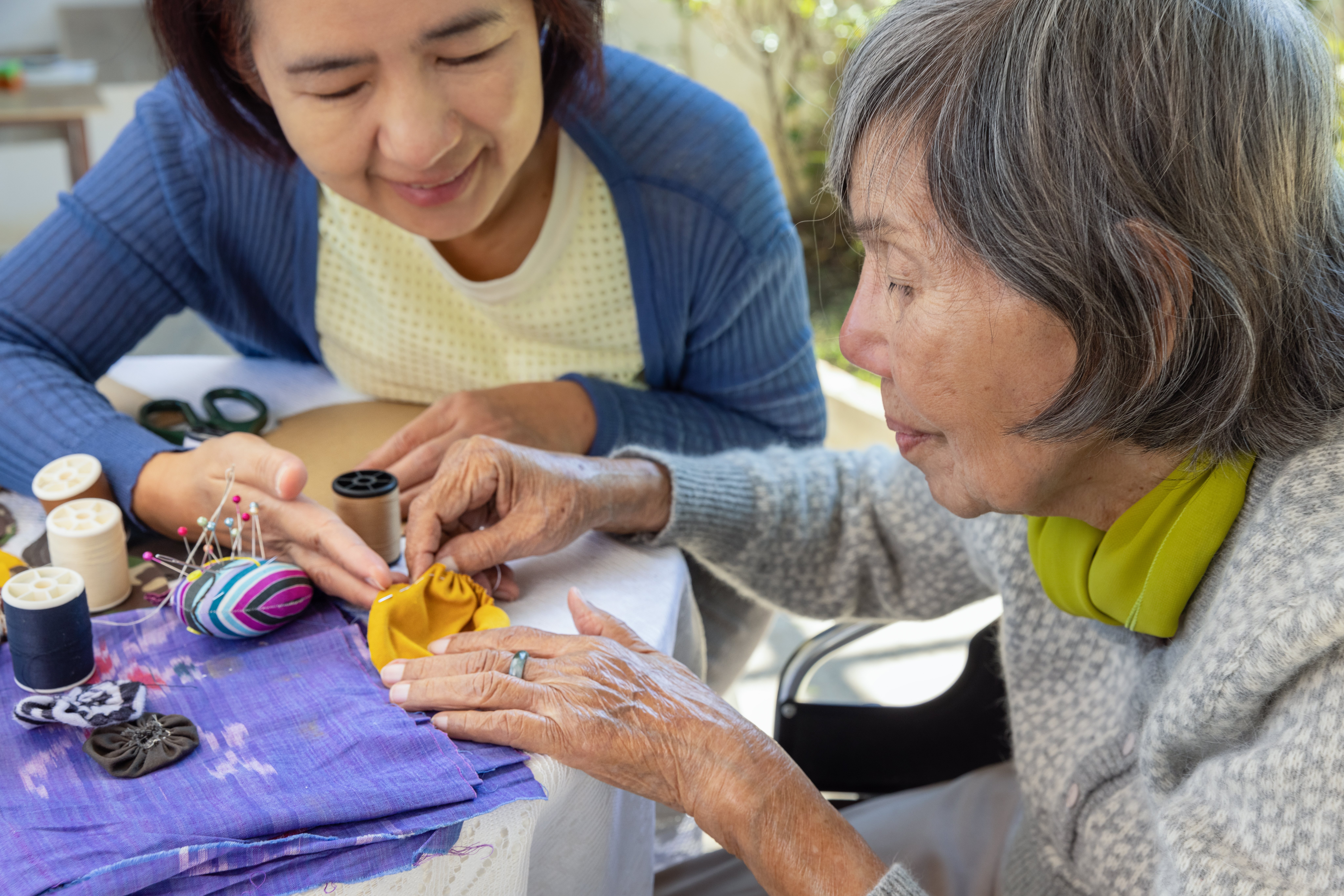What exactly is an allergy?
When people say “allergy,” they use the term to mean a lot of different things. To me it means something very precise: an IgE-mediated immune response to a substance.
IgE refers to a type of antibody, a protein in our blood. IgE evolved to help defend us against parasitic infections, which are not much of an issue in modern life. But IgE can also recognize things that are benign in the environment, leading to an allergic reaction. IgE binds to immune cells and triggers the release of histamine, causing symptoms like runny nose, nasal congestion, watery eyes, cough, wheezing, itching, hives, and rashes.
Why do some allergies wait until adulthood to appear?
Again, many adults experience symptoms that they might think of as being allergic but are not. If it’s a true allergy, one reason that people may not have experienced an allergy before adulthood is a lack of previous exposure to an allergen. And that can be related to a change in life experiences.
The COVID-19 pandemic led to changes in work environments, for example. Before COVID, many people worked in very allergy-low environments in office buildings with tile floors, vinyl furniture, no pets, windows that don’t open, and everything air conditioned and climate controlled. Now, it’s different when you’re working at home a lot.
For environmental allergies – trees, grasses, and weeds that can cause hay fever and sneezy, wheezy, itchy-type symptoms – it may be that someone lived in a location where they weren’t sensitized to something, and then they moved to a different climate.
A lack of previous exposure can also be a factor in adult-onset food allergies. You’re probably not feeding your toddler lobster, so maybe you’re not exposed to that until later.
Sometimes after women go through immunologic changes during pregnancy, they may experience new allergies.
→ Are Seasonal Allergy Medications Causing Your Dry Eye Symptoms?
As adults enter their senior years, do other factors come into play?
Environmental exposures can change as people age. When people retire, maybe they’re suddenly out on a golf course a lot, and they’re getting stung by insects and the grass pollens are kicking up.
Medication allergies are much more common in older adults because they tend to be taking more medications.
That said, it’s also true that for some people, allergies are less of an issue as they get older.
You mentioned things that mimic allergies but aren’t really allergies. What are those?
What I see a lot, especially in people in their 50s and older, is what we call non-allergic rhinitis or vasomotor rhinitis. The symptoms are similar to an allergy – nasal congestion, runny nose, post-nasal drip – but they’re not caused by an immune response to an allergen. Instead, they’re triggered by another environmental factor, like cold air or air pollution.
Our noses can become less tolerant of certain changes as we get older – changes in barometric pressure, temperature, humidity, irritants, perfumes, fragrances, strong odors, smoke. Cold, windy, dry days can be very irritating to our noses. A colleague calls it “skier’s nose.”
Also, as we get older, we're more likely to develop health problems that require taking different medications, and sometimes medications can have side effects that cause symptoms that are like allergies. For example, someone who has difficulty urinating might start an alpha blocker, which relaxes the muscles of the urinary tract, but it also can relax the blood vessels of the nose and make you congested.
Hormonal fluctuations with menopause, or starting hormonal replacement therapy, can also cause symptoms that seem like allergies.
→ What You Should Know About Food Allergies and Eating at Restaurants
When someone goes to the doctor, thinking they have a new allergy, what sort of testing gets done?
We can do skin testing. Let’s say you think you’re allergic to your cat. We get a standardized cat-allergen extract, put a raindrop’s worth on your skin, and then prick the skin. After about 15 minutes, we observe to see if you’ve developed a small hive, like a mosquito bite, which suggests you are sensitized to that allergen.
Sometimes to test for medication allergies, we use a slightly more invasive skin test called intradermal testing, injecting the suspected allergen under the surface of the skin.
Another type of test is blood testing, which looks for that allergic antibody, the IgE. We send it to the lab to detect what specific IgE you might have in your blood. The results take a few days to a week to come back. We can test for single allergens or a panel of tests for several allergens.
If we’re talking about seasonal allergies, we’ll tend to do a standard panel for common environmental allergens in this area – trees, grasses, weeds, molds, animal dander, dust mites, cockroaches, and so on. We call it a Colorado panel. It’s local because allergy is local. In Florida, the panel would have a lot more molds.
What can people do on their own to protect themselves from allergies?
Environmental avoidance measures are something people can do on their own.
If you’re allergic to an animal, it would be great not to have that type of animal as a pet, but if you already have one, you can keep it out of your bedroom.. The major allergen for both cats and dogs is in their saliva, but cats spend all day distributing their saliva all over themselves, so cats tend to be more of a problem than dogs are. There are products you can buy for cats that decrease the allergen in their saliva.
You can minimize carpeting in your home or frequently vacuum the carpets you have. You can change filters on your HVAC system frequently. Air conditioning is best for air purification. A portable HEPA air purifier won’t filter all the air in a big house, but it can help if you spend a lot of time in one area, like an office or bedroom.
For seasonal allergies, if you’re outdoors for a long period, when you come indoors, take your shoes off, take a shower, wash your hair, and change clothes. The worst thing you can do is lie on the couch in the clothes that you mowed the lawn in, fall asleep, and your dog that’s been rolling in the grass jumps all over you.
Dust mites are not much of an issue in Colorado, as they need humidity to survive, but if you’re visiting someplace more humid, an allergy-proof pillow cover can be helpful to reduce dust mite exposure.
Sometimes your doctor will recommend nasal saline irrigations – basically rinsing your nose with a salt water solution. Make sure you use distilled water or water that has been boiled and cooled to a comfortable temperature to eliminate pathogens in your nasal rinse. Many of the medications we recommend, like nasal steroids and nasal antihistamines, are now also available over the counter.
→ Could a Nasal Spray Replace an EpiPen? Here’s What a CU Allergist Says
What are some common prescription treatments?
Besides nasal steroids and antihistamines, there are allergen immunotherapy shots, which involve taking pollens and danders that you’re allergic to and giving you small doses to help you to build tolerance. You must come in for those weekly for several months and then monthly for three to five years. Many people notice less symptoms and need for medications after about a year on shots.
If you’re someone who retired and is now spending a lot more time outside, and you’re bothered by pollen allergies that you didn’t pay much attention to when you were working in an office, we’re happy to see you and evaluate you.




